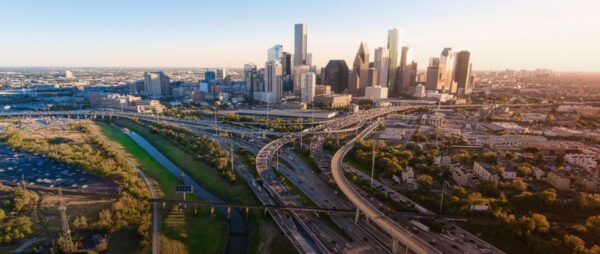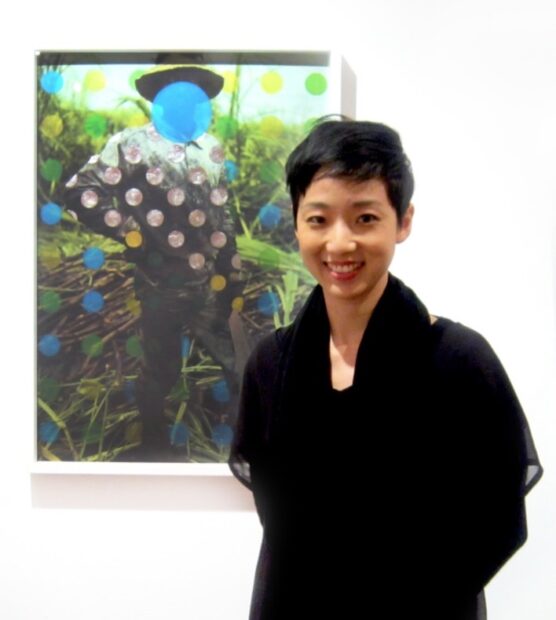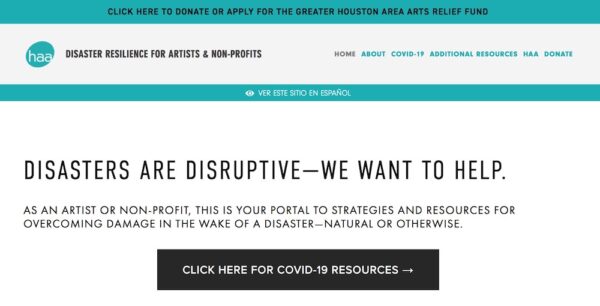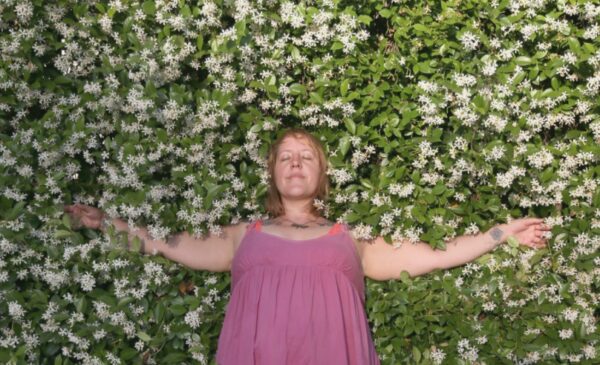To read Part 1, please go here.
Part 1 of this two-part series portrayed how the arts and culture communities of El Paso, Odessa, Austin, San Antonio, Waco and Corpus Christi have fared since the initial Covid shutdowns. Each of those arts and cultural affairs agencies had to scramble, invent, innovate, improvise and expedite plans, some long-intended, to help their arts communities survive during what is now described as the pandemic’s “double black swan” circumstances.
This, Part 2, focuses on the Houston story. How have Houston’s art agencies, the Mayor’s Office of Cultural Affairs, and the Houston Arts Alliance responded to the Covid economic crisis? What these entities’ relationship to Houston’s arts community? And I take a look at the formation of Arts Accountability Houston.
I write about this subject for several reasons: I am an artist living in Houston; I am a recipient of the 2020 Support for Artist + Creative Individuals grant (SACI) from the Houston Arts Alliance (HAA); I am on the steering committee of the Houston Alliance for Latinx Arts; and have informally advised the art groups who are covered in this piece. This article is not an op-ed, nor a formal essay, nor a white paper on policy. My intention is to inform readers about some of Texas and Houston’s arts and culture communities’ pandemic responses; to recount how an emerging arts advocacy group contributed to a larger conversation about arts funding in Houston; and to assist in untangling and illuminating the challenges and obstacles that face sustainable funding for arts and culture.
In late August, Facebook posts exchanged among Houston artists expressed outrage about how arts grants to individuals, public art programs, festivals and art organizations were reduced by half because of lost revenue from the local hotel occupancy tax (HOT) due to the Covid pandemic. HOT money is the primary resource for the City of Houston’s arts funding. These artists — concerned about how the Covid situation required changes in their intended proposals and caused financial stress on themselves and their small arts organizations, and the seeming lack of communication from HAA for direction during this crisis — formed a group called Arts Accountability Houston (AAH). AAH’s initial purpose was to tell HAA, and the Mayor’s Office of Cultural Affairs (MOCA) which contracts HAA as its grant administrator, how a vulnerable economic group of working-class artists, artists of color and small arts organizations will suffer from these cuts.
As discussions heated up within the arts community, HAA recognized the need to convene a Zoom meeting with awardees. In September, John Abodeely, HAA’s Chief Executive Officer, acknowledged and apologized for the shortfalls in communication, while promising to hear recommendations about changes to the contractual obligations in the Support for Artists + Creative Individual (SACI) grant, and to improve communications overall.
What followed was an exchange of press releases, online surveys, and clarifying misrepresentations about the handling of HOT money. Soon after the initial Zoom meeting, HAA presented to AAH members and other grantees several options for restructuring future HOT revenue. More feedback and response were recorded, press-release language was changed, and the debates continued.
In October, HAA recommended to MOCA that 2020 grantees be permitted to extend their project deadline until December 2021, to allow revision and flexibility in the works, as well as the proposal of a prioritization of 2021 HOT funds for ’20 grantees as much as possible, if funds were to become available. At the same time, HAA promised a more open platform for grantee needs, with free technical and administrative assistance for awardees most affected by the pandemic.
Meanwhile, Arts Accountability Houston also wanted to focus on the long-term goal for a more sustainable arts funding structure that “doesn’t leave artists in the lurch,” according to artist awardee and one organizer for AAH, Liyen Chong. Chong sees how more direct communication is needed for a closer relationship between the arts community and the City art agencies. She emphasizes that this could foster a dialogue about grassroots art organizations and individual artists in economic need, so that they’re not left perpetually underfunded during an era of annual disasters for Houstonians.
Back in 2017, Hurricane Harvey led HAA to develop a permanent disaster response team. With a dedicated website, HAA’s Disaster Resilience for Artists & Non-Profits lays out a grant resource page, guidelines for risk assessment, preparation for hazards, where to get FEMA assistance, instructions for art and archive preservation, etc. Prior to Harvey, emergency protocols did not exist for how the Houston-area arts community might deal with economic and humanitarian crisis in the city.
At the outset of the Covid pandemic HAA’s Disaster Team acted on its protocols. In April, it launched the Greater Houston Arts Relief Fund, a GoFundMe campaign that provides financial assistance to artist and art workers. Through that initiative, $330K was raised and the program has thus far awarded 475 people via its grants.
From the federal CARES Act Relief Program for Arts and Culture, HAA was also able to disperse $2 million worth of grants to 574 individuals and institutions this year. While neither the CARES money nor the Arts Relief Fund can be used to fulfill the 2020 HOT-funded grants, at least some resources were available for artists and organizations in need of financial help. But dealing with Covid is a different animal than dealing with a hurricane — both physically and mentally. Normally a ubiquitous presence at pre-pandemic Houston art events, Abodeely states, “It’s been a tough year.” Even now, he “receives an email a day from artists asking for help.”
Deborah McNulty, Director of the Houston Mayor’s Office of Cultural Affairs (MOCA), has been working at her office throughout the pandemic while her staff work remotely from home. The Covid crisis placed MOCA in emergency mode. McNulty’s response was to “get as much going as quickly as we can.”
In June, with cooperation from the City government’s various departments, MOCA was able to expedite the City’s Civic Arts Program. $3 million was made available for art acquisitions and commissions for two multi-service community centers and the two major Houston Airports. It would amount to approximately 100 new opportunities for Houston and Texan artists. The designated 1.75% of qualified Capital Improvement Projects dollars had already been set aside earlier this year, but the crisis made it urgent to make it more immediately available, rather than waiting for project completions.
To the consternation of many applicants, these commissions and awards cannot be announced for a few more months. According to Abodeely, an inundation of applications and proposals, plus an expanded panel process with new equity and vulnerability measurements, prolongs adjudication. In April, at least, MOCA allocated $25K of its own funds to HAA’s Arts Relief Fund.
Recently, MOCA announced that another $3 million of CARES funds were to be made available by the City to musicians and music venues. Grants are outlined as a maximum of $5K to individual musicians, $50K to music venues with annual budgets of $2 million or less, and $100K to venues with budgets of more than $2 million. The ancillary economic benefits from food and drink sales, hired workers, and event producers can expect to have ripple effects in Houston’s economy. This new round of funding’s deadline is nearly upon us: December 30. If the money is not in the hands of the intended grantees by then, these CARES funds must be returned to the State of Texas.
The Mayor and City Council’s approval of $5 million in CARES money for arts and culture, the expedited $3 million for the Civic Arts Program, plus HAA raising $330K for the Arts Relief Fund are substantial responses from the City art agencies. McNulty is grateful that the City Council and Mayor saw the arts and culture community as important.
Not surprisingly, much of Houston’s CARES and other disaster funds are overwhelmingly prioritized toward a variety of non-art-related needs: rental assistance, small-business loans, domestic violence and food programs, childcare centers for essential workers, health and safety, PPE, etc. So $5 million in CARES money can’t help everyone in the arts community affected by Covid. “Because of the scale of the crisis there wasn’t going to be a silver bullet,” says McNulty.
Between the artists and art spaces, HAA, and MOCA, messaging and communication in a city of 236 million people poses major complications. An always-growing arts community, in a city with diminishing resources, makes it difficult to know where artists can go for help during a crisis. But input and open discussion can happen. Abodeely agrees. “Asking critical questions is how we get better.”
AAH suggests adding more artists and arts workers, who have labor experience in the culture industries, to the HAA Board of Directors and Advisory Councils. “Having someone who knows about what the conditions are” and has the experience of “living in financial precarity” is valuable, says AAH’s Chong. Communicating directly with artists living on the economic edges can promote more dialogue and improve equity and transparency.
Sustainability for arts funding in Houston is a long-term issue. The vast reduction of HOT revenue this year due to a pandemic has proven that a once-reliable source of funding cannot be assumed. Does this mean that diversifying funding sources for the arts can stabilize the arts community during major recessions? As Randy Ham, Director of Odessa Arts (see Part 1 of this series) said: “It’s not wise to rely on a single funding source.” With the exception of Houston’s Civic Arts Program (with it funds coming from 1.75% of capital projects), McNulty herself doesn’t know of any recession-proof funds. And with private contributors exhibiting donor fatigue, and greater competition for foundation money and corporate sources who are feeling the economic pinch, the solutions for sustainable arts funding seem remote.
The City of Houston was generous and responsible in using some of its CARES allocation to bolster its arts community. But perhaps a long-term budget allocation from the City’s general fund is needed to stabilize arts funding? Has Houston’s arts community considered developing closer relations with representative city council members?
Those looking for more options may look toward the Harris County government, which receives upward of $20 million from HOT revenue annually. The County government does not and has not historically contributed HAA, despite sharing the same constituency. Would a minimal Harris County investment to HAA be in order so the burden can be shared between Houston and its county?
Another potential funding source is Houston’s Tax Increment Reinvestment Zone program (TIRZ), by which the City diverts property-tax revenue for re-investment in neighborhoods in need of more public infrastructure and improvements. Art is a democratizing force, and areas beyond Houston’s downtown area deserve and demand more culture. Could TIRZ money offset the current costs of grant opportunities that deplete scarce HOT money?
The “elephant in the room” for arts funding is Houston’s revenue cap. Passed in 2004 through a voter initiative, it binds Houston from raising the tax rate no more that 4.5% per year. It is the only city in Texas with a self-imposed limitation. Are all Houston services and demands stable and consistent enough over the long term to justify a revenue cap? I ask because Houston is the fastest-growing city in the U.S. As the largest city in Texas (currently #4 and soon to be #3 in the country), it is prone to natural disasters (see regularly historic floods via hurricanes), and faces the many of the same statewide and global threats as all other municipalities and counties. Are Houstonians willing to look again at ballot propositions to remove the revenue cap?
This past June, Texas Governor Greg Abbott signed a law limiting any county or city from raising their tax rates more than 3.5%. This is a threat to cities such as El Paso, Odessa and Austin, who look to improve services while continuing to fund a growing arts and culture scene. Another potential hazard for more arts funding is Abbott’s threat to propose new legislation that penalizes local governments if they choose to reduce spending on law enforcement. Could Abbott and our state legislators be another pressure point to consider when advocating for sustainable arts funding?
The challenges and obstacles for sustainable arts funding can seem formidable. I spoke to Ann S. Graham, Director for Texans for the Arts. She says, “It would be healthy if all our communities would have diversified streams for arts funding. That doesn’t mean that it is easy.”
Despite the tensions in Houston’s art community, new conversations are generating a greater awareness about how the City and Harris County invests in its arts and cultural communities and industries. “The conversation has more realness and made people more open … and [made] space to air our frustrations,” says Ceci Norman, an HAA grant recipient, an original organizer for AAH, and a current graduate student in the Arts Leadership Program in the Kathrine G. McGovern College of the Arts at the University of Houston. Norman’s experience speaks to the importance of mutual aid and care; refreshingly, she discloses how unemployment insurance and a CARES grant helped her get through the pandemic. Norman’s graduate work and art practice focuses on the intersectionality between arts and health care. She sees potential during this crisis, and offers a few ideas for Houston’s arts community. In addition to the City building a nest egg for the next disaster, post-vaccine, why not implement a program to reintroduce art and culture in post-pandemic Houston? Maybe there are ways to make art, artists, performers and musicians work during a future disaster. Norman says: “How cool will it be if artists and musicians can go into a neighborhood to give people beauty and relief!”












4 comments
Good article, but you left out an organization in Houston that has provided, as if November 2020, over $700,000 to artists and musicians in Houston as well National artists that missed out on participating in Bayou City Arts Festival in March. To learn more about us and our work and mission, please visit: http://www.artists4artists.org.
To Tra’ Slaughter,
Your organization does great work and I wish I had known about it. However, the purpose of my article was to talk about how the governmental art agencies (in Houston and throughout Texas – see Part 1 of this article) are doing during this time. In addition how the conversation between the City art agencies and with the new arts advocacy group are developing into a dialogue about sustainable arts funding.
Nonetheless, Artists4artist deserves as much attention as possible!
A much needed analysis of the situation currently unfolding in Houston. We thank the organizations and city officials who have already responded with openness to us and hope that this is an impetus for all parties involved to engage in open and direct conversations, no matter how difficult they may be.
I have to say, with the glaring exception of the much needed civic art project award dispersal, I think the city and HAA have done a pretty good job of supporting artists. They’ve given out grants of support as mentioned in the article. And I find it uncomfortable that there is an assumption that the city is both required to fund art and that it is required to fund it to a certain level and sustainability.
The grantees who were awarded grants prior to the pandemic are absolutely owed the funding in full. The city made it available, made the commitment, and awarded the grants. To do less than fully fund their commitment is a bait and switch. That is their responsibility. Doesn’t matter where the money comes from, paying the 2020 grantees is an obligation. Whether it comes from somewhere else or next year, it doesn’t matter. Next year is promised to no one, but this year absolutely was.
Regarding whether the city is obligated to provide funding for the arts is another thing. As the city benefits from a vibrant arts community, it makes sense that it should invest in the arts for mutual benefit. The fact that city funding is such a vital lifeline for artists is a clear indication that arts work and arts professionals are being exploited to the point where city funding is required to stay in the game. Everyone knows the value of art. The city knows what art brings to its residents and visitors. Developers know what art brings to their newly built communities. The general public knows how much better their community is with the arts all over the place. It’s past time that instead of being exploited for their art, the makers of it actually receive their value for their work. Then city funding becomes a piece of the whole available pool, not necessary lifeblood.